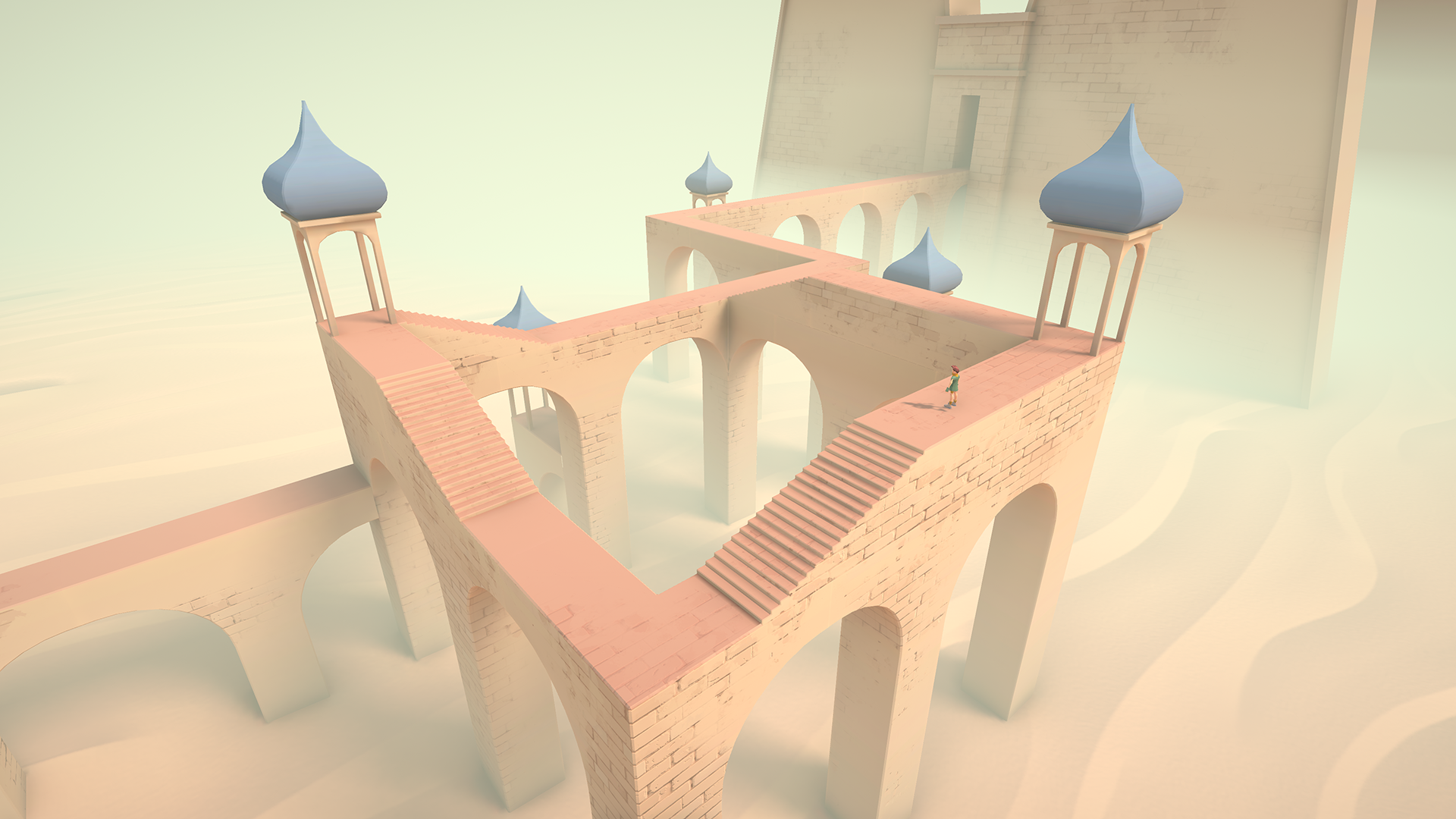Tools: Unity, FMOD, Yarn Spinner
Roles: Game Design, Sound Design, Playtest Evaluation
Link: https://gamejolt.com/games/the-bestowed-city/527357
On the verge of starving in an internment camp, a refugee boy’s only escape from the dreary and monotonous life are his dreams, in which he rescues his people from captivity; but when more refugees arrive to the camp he must learn to keep his head up before he loses all hope.
The Bestowed City is a puzzle game about people’s ignorance by those who could have helped ultimately shattering the hopes and dreams of those in need. The game will be released for PC and targets players interested in immersing themselves into a character and his story as well as exploring a game’s mechanics and tinkering with them.
The Internment Camp and the Dream World are antithetical; in the Internment Camp it takes the heart succeed, whereas the mind is needed to finish the episodes. Unlike the Dream World, the player is handicapped in their movement in the Internment, by a slow and heavy walking speed and a dark overlay, blocking the player’s view on the screen’s edges.
The dreams reflect the boy’s immediate and greater need. In the Dream World, the boy can freely move and plant the Staff of Musa to grow an endless supply of fruits, whereas in the Internment Camp he is locked up and hungry. Life in the Internment Camp is shaped by uncertainty, whereas problem-solving dominates the Dream World.
Should the player fail to help NPCs, negative feelings such as guilt or anxiety will personify in nightmares. They confront the player in verse (combining the Internment Camp’s dialogue’s with the Dream World’s poems). The player then has to find an optimal answer fitting to the rhyme and rhythm of the previous verses.
Once a dream finishes, a new day starts; food retribution has commenced. New people arrive– interactions with them have an impact on the Dream World. Both the Dream World as well as the Internment Camp feed into the boy’s hope. The less hope the boy has, the more does the overlay (see above) block the player’s view, and conversely, the more hope the boy has, the more the player can see. The boy’s hope rises with the player giving optimistic or positive answers to NPCs or by finishing a level in under three tries. However, the boy can also lose hope, namely by giving pessimistic or offensive answers or by failing more than three times in Nightmares. Should the boy lose all his hope, the overlay will fill the entire screen and the game thereby be lost.
The player also finds objects from the Internment Camp in the Dream World. Most notably, the player gets handed a talisman, which is incorporated into the Dream World and Nightmares as an overlay representing the player’s tries, starting with three at the beginning of each level. But also containers, tents and barbed wires are incorporated.

Art by Arkadijs Gribacovs and Alexey Garmash